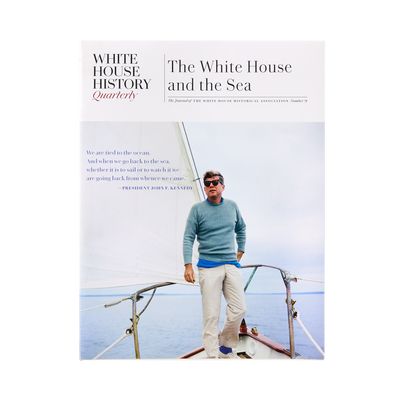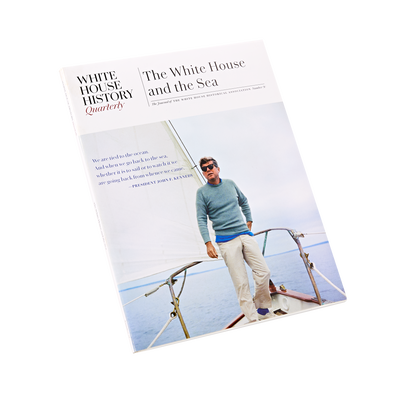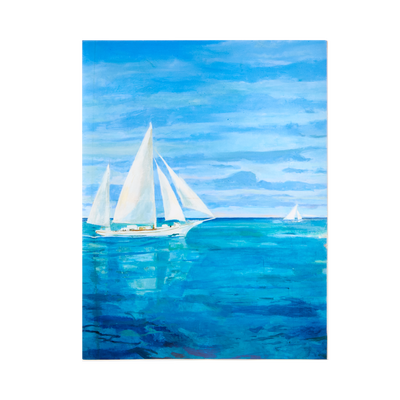



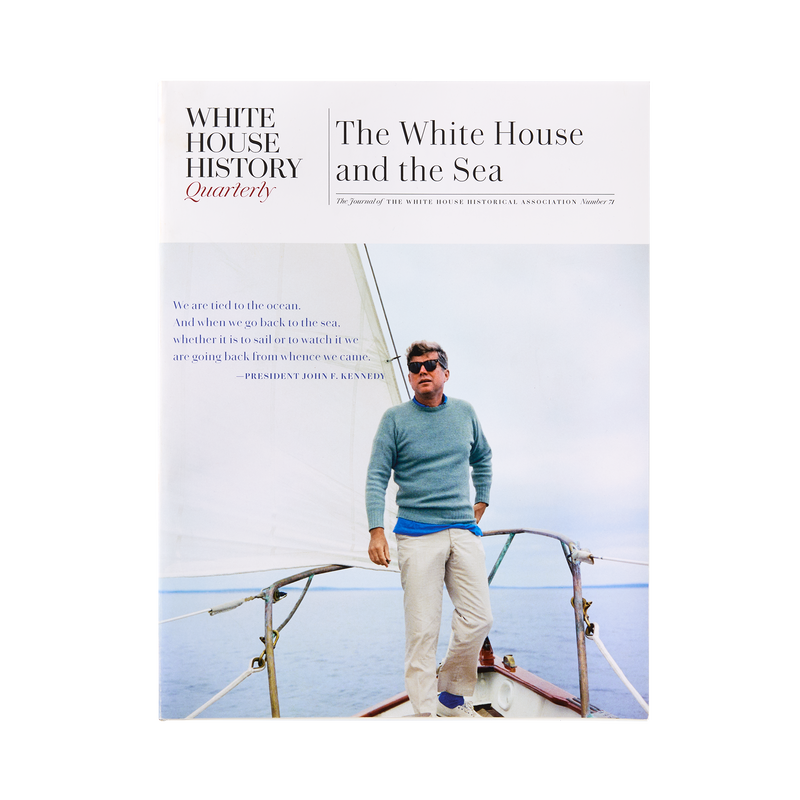
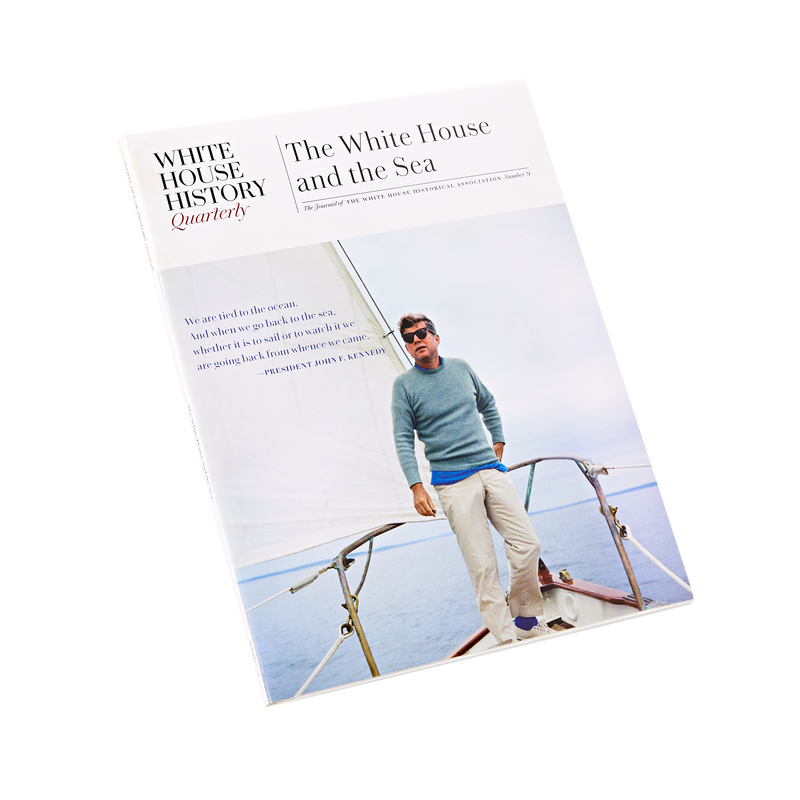
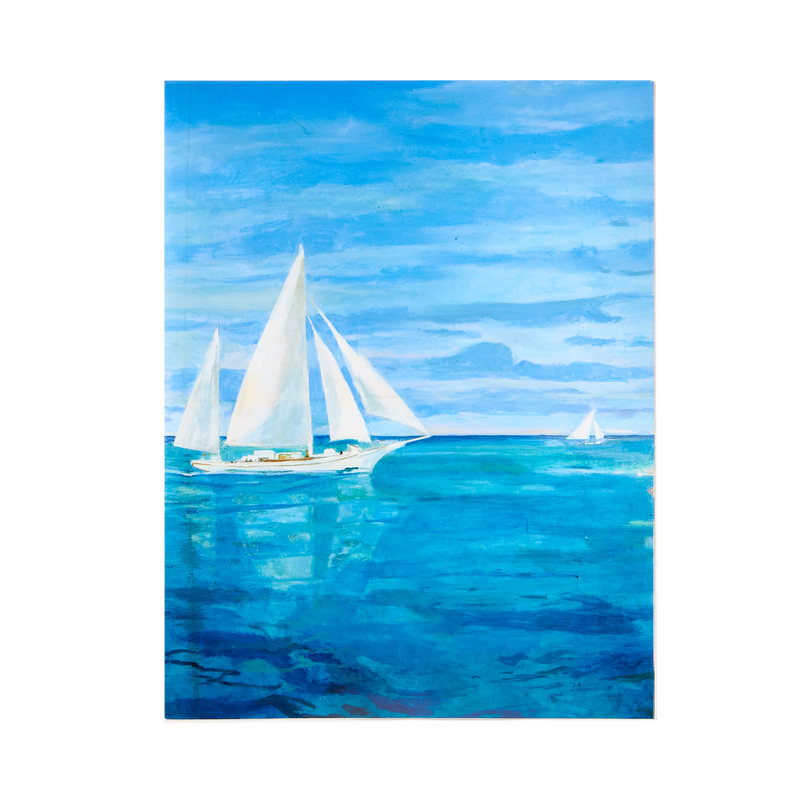
Additional Information
With this issue of the Quarterly we follow America’s presidents to sea, where so many chapters of White House history have been written. Sailing on the Mayflower, the Sequoia, the Potomac, and other vessels both official and private, our presidents have carried the burdens of the White House out over the horizon. They have sought peace at sea, relaxed, dined, and celebrated at sea, and mourned tragedies at sea. As this issue goes to press, November 22, 2023, the sixtieth anniversary of the assassination of President John F. Kennedy, approaches. Reflections on his lifelong connections to the sea are threaded through the issue, and it is fitting that his words—“we are tied to the ocean”—are quoted on our cover. They set the stage for the articles to follow.
From George Washington’s crossing of the Delaware to Joe Biden’s sojourns to Rehoboth, Kenneth T. Walsh’s opening survey reveals the significance of “time on the water” for the presidents.
Historian Matthew Goetz reminds us that it was at the urging of future president George Washington that the Continental Congress established the navy. By the twentieth century, the small force of “civilian fishing vessels” that Washington commissioned had grown into the
world’s greatest navy. Among the U.S. Navy’s mid-century sailors committed to defending democracy and safeguarding freedom were six future presidents whose service is recounted by Stewart D. McLaurin in his Quarterly Reflections.
“You have to go a long way off to see things in their true perspective,” observed President Franklin D. Roosevelt, who spent more time at sea than any other president. Author James Fortuna explains that, whether for diplomacy, statecraft, or recreation, FDR, who filled his Private Quarters in the White House with nautical paintings and model ships, considered sailing an “absolute necessity.” On many of these excursions FDR was joined by his military aide William Rigdon, who described the role as “the best duty I ever had.” Author Mary Jo Binker traces Rigdon’s adventures with the president.
Although the sea can bring true comfort to the presidents, it has at times also bought great sorrow. Matthew Costello takes us back to the sinking of the Titanic in 1912, which took the life of President William Howard Taft’s trusted adviser Major Archibald Butt. A hero in death, Butt, poignantly eulogized by Taft himself, is remembered today by a monument just south of the White House in the President’s Park.
Back on dry land at the White House, reminders of the sea are close at hand. Former White House curator Lydia Tederick presents a selection of the coastal paintings in the White House Collection that can quickly transport the president back to the water through the eyes of the nation’s most accomplished artists. Many presidents have included nautical references in the decor of their workspace, and in recent decades the Oval Office has been furnished with the famous Resolute Desk. Ornately carved from the timbers of the British exploring vessel HMS Resolute, it was given by Queen Victoria to President Rutherford B. Hayes in 1880. Once trapped in Arctic ice, the salvaged oak from which the president conducts the business of the nation provides a tangible connection to the sea.
Culinary historian Alex Prud’homme shares two stories of presidential dining at sea. For Calvin Coolidge, dinner at sea was often on the Mayflower in the form of an early version of “Asian fusion,” prepared by navy steward and chef Lee Ping Quan. For Kennedy, it was on May 29, 1963, what turned out to be his last birthday, when his closest friends and family enjoyed roast fillet of beef with Dom Pérignon on the Sequoia.
With a focus on five chief executives—George Washington, Abraham Lincoln, Theodore Roosevelt, Woodrow Wilson, and Ronald Reagan—author Joel Kemelhor provides the first of what will be an ongoing review of ships named for the presidents. Beginning with a merchant vessel renamed Washington in 1775 and ending with the USS George Washington heading for Japan in 2024, Kemelhor documents their places in both nautical history and popular culture.
Awards:
Communicator Award
